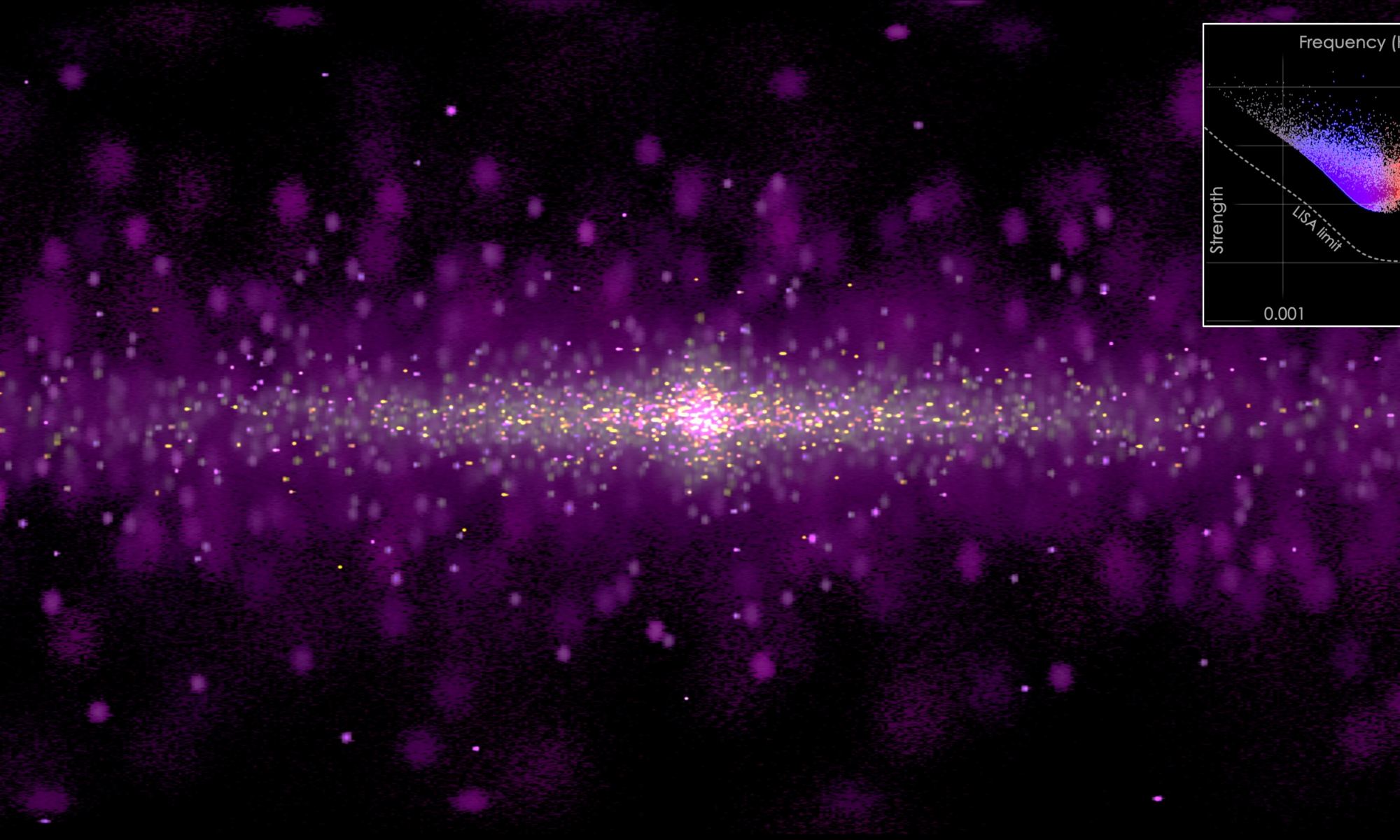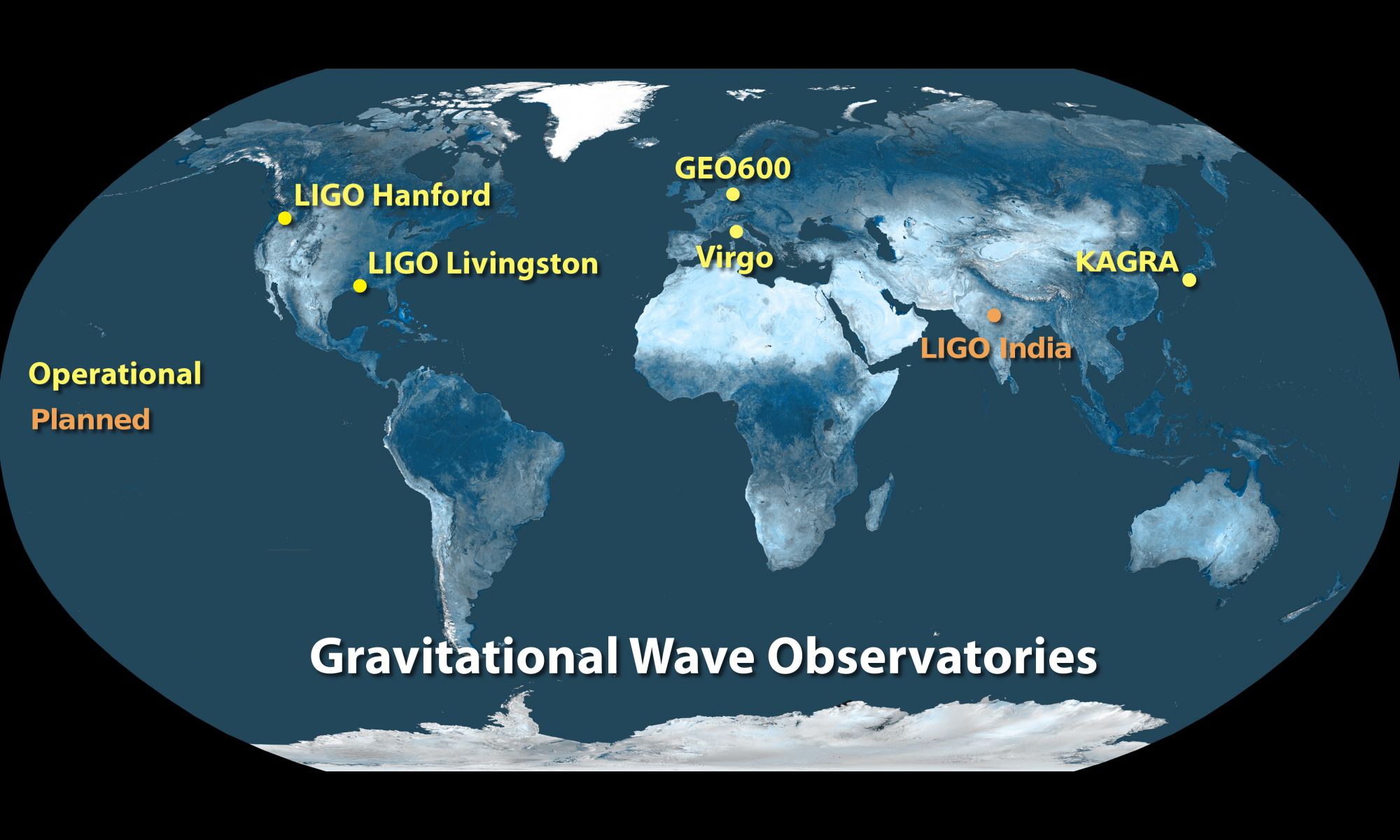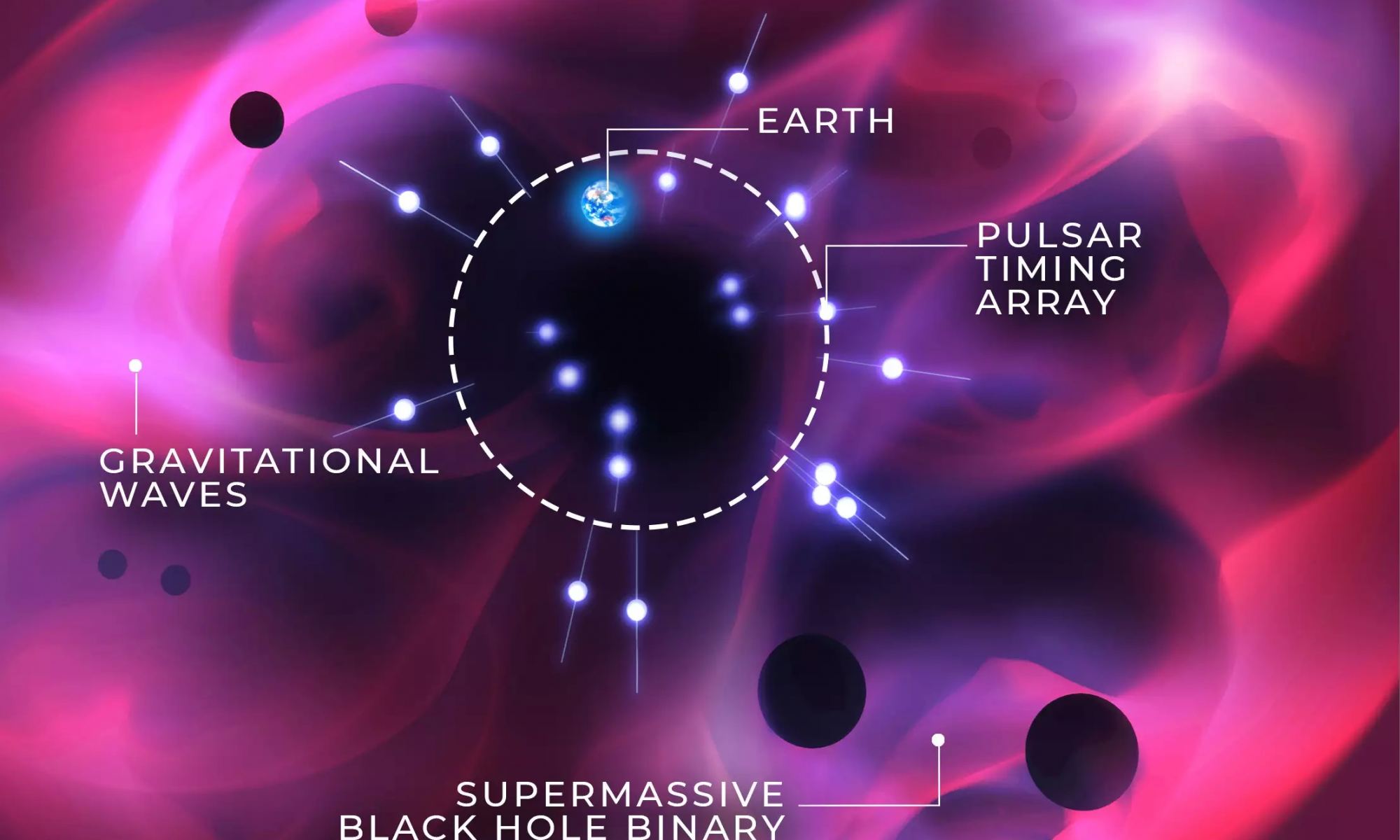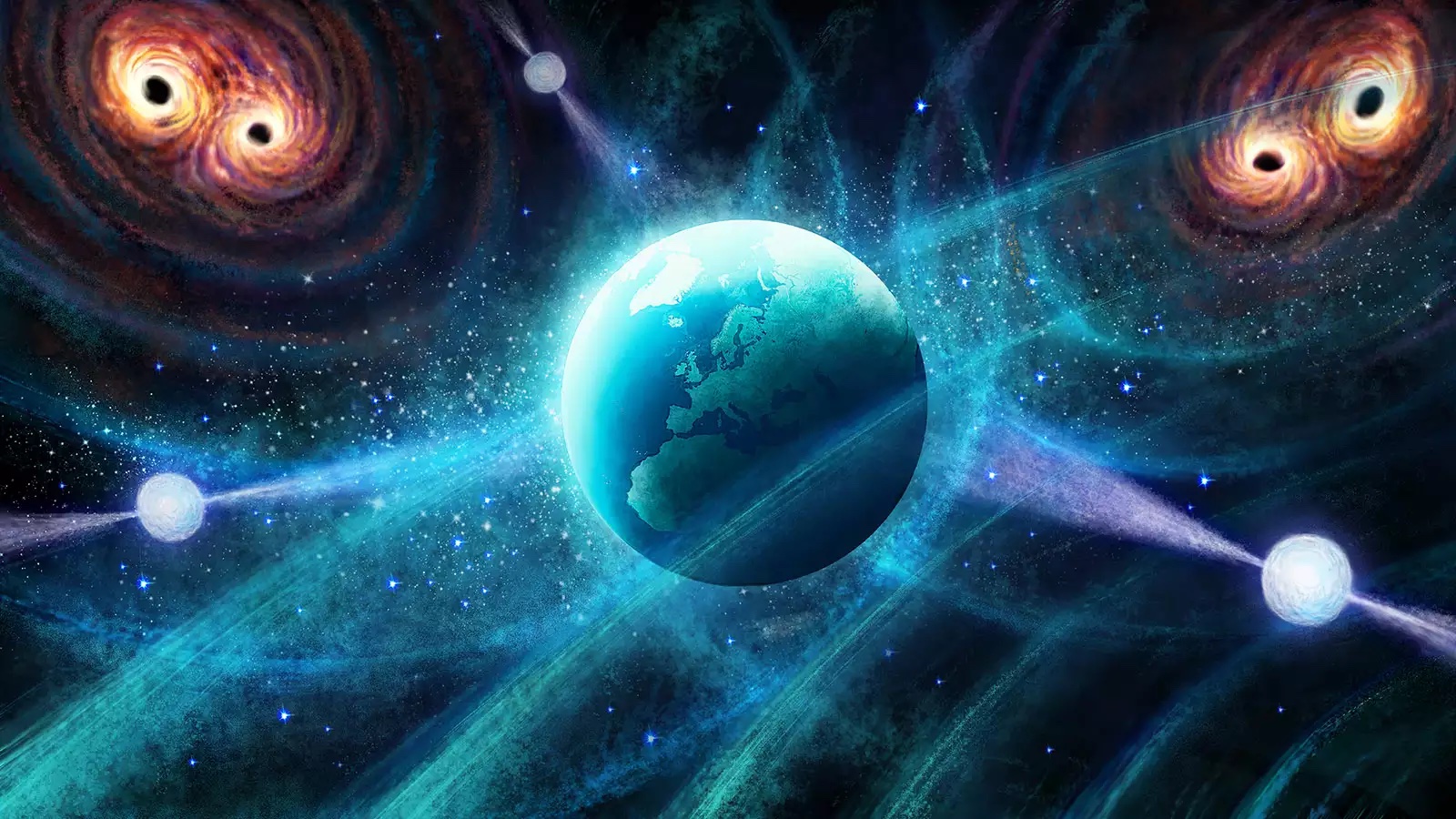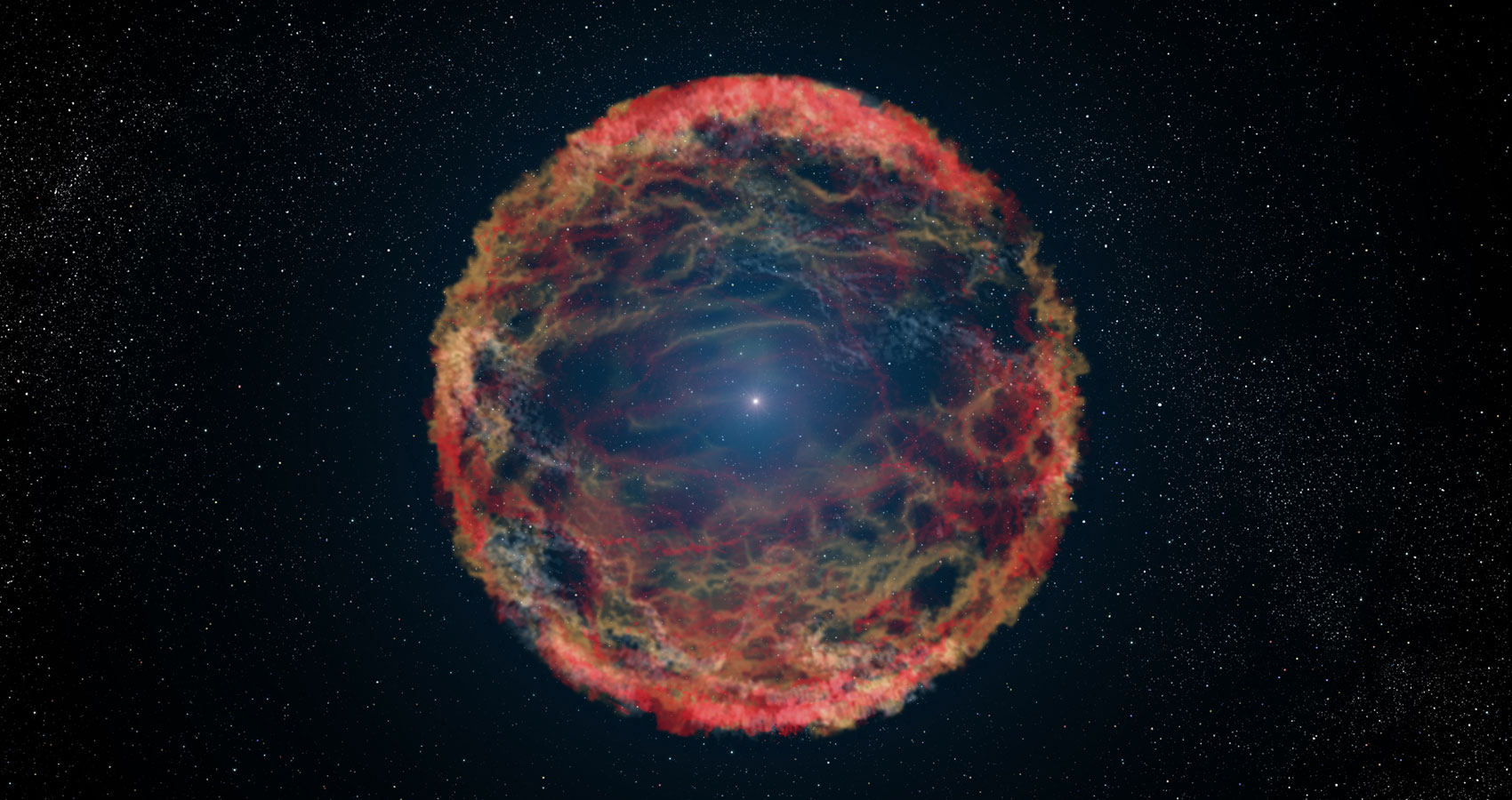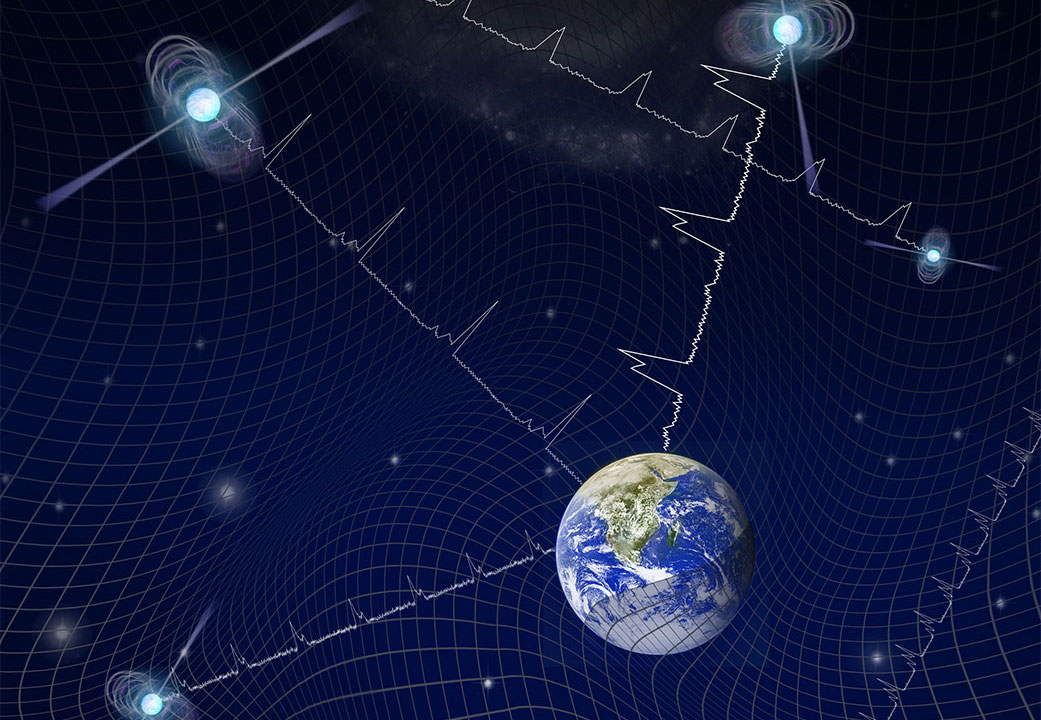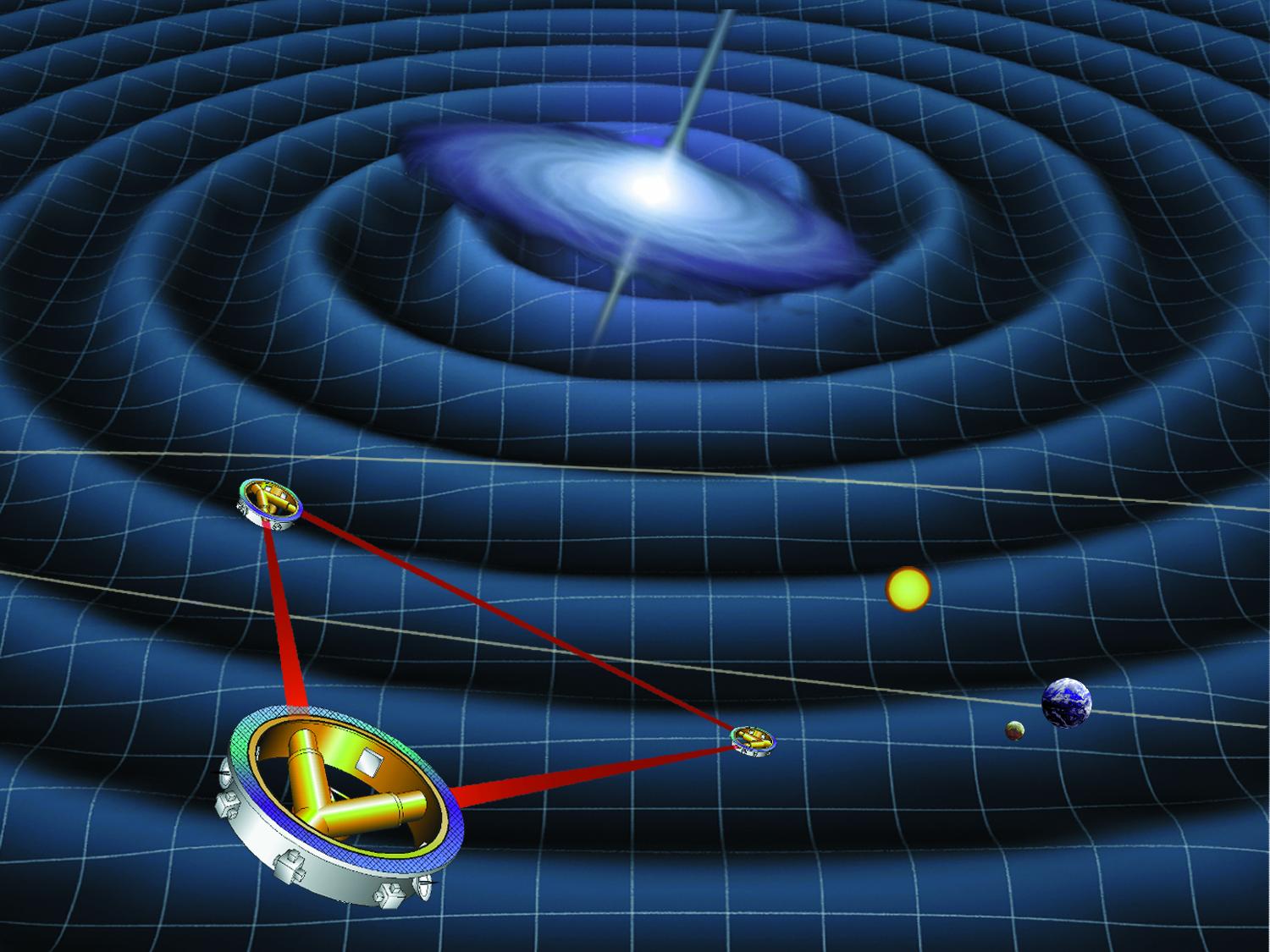Imagine if you could see gravitational waves.
Of course, humans are too small to sense all but the strongest gravitational waves, so imagine you were a great creature of deep space, with tendrils that could extend a million kilometers. As gravitational waves rippled across your vast body, you would sense them squeezing and tugging ever so slightly upon you. And your brilliant mind could use these sensations to create an image in your mind. The ripples of distant supernovae, merging black holes, the undercurrent of the gravitational background. Creation, and destruction, all seen in your mind’s eye.
Continue reading “If You Could See Gravitational Waves, the Universe Would Look Like This”
